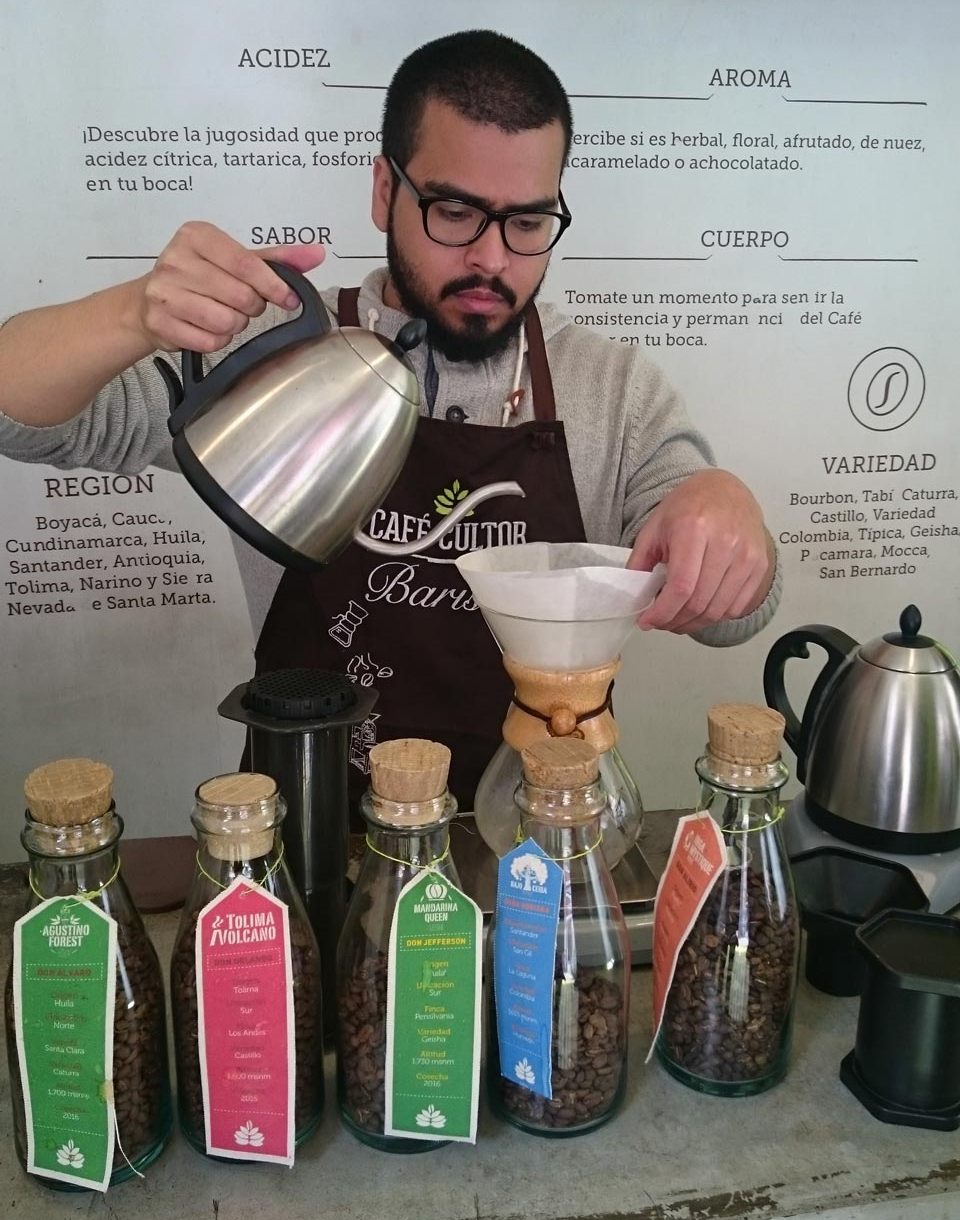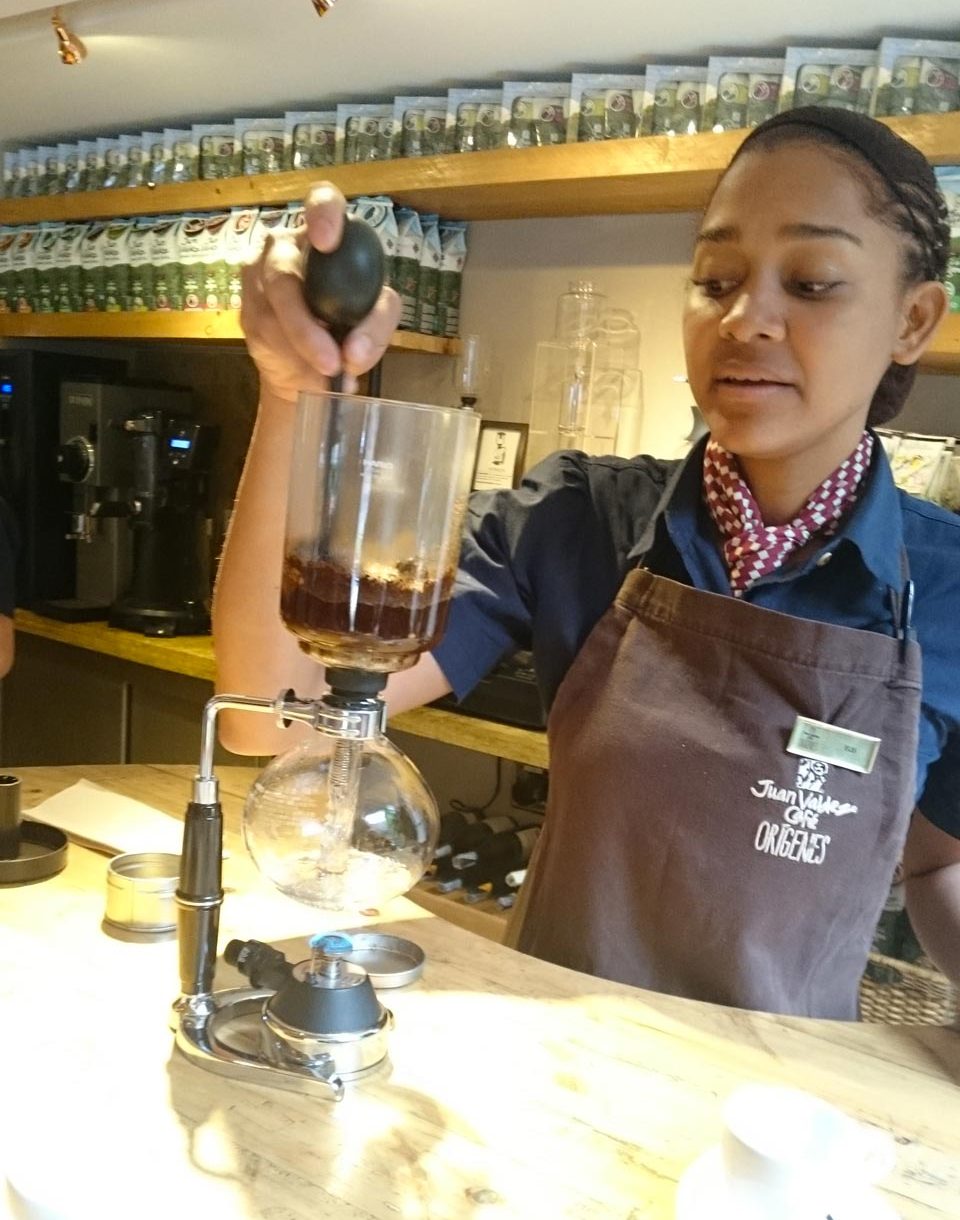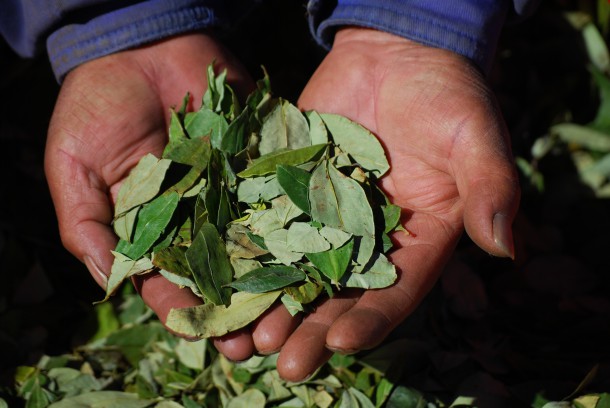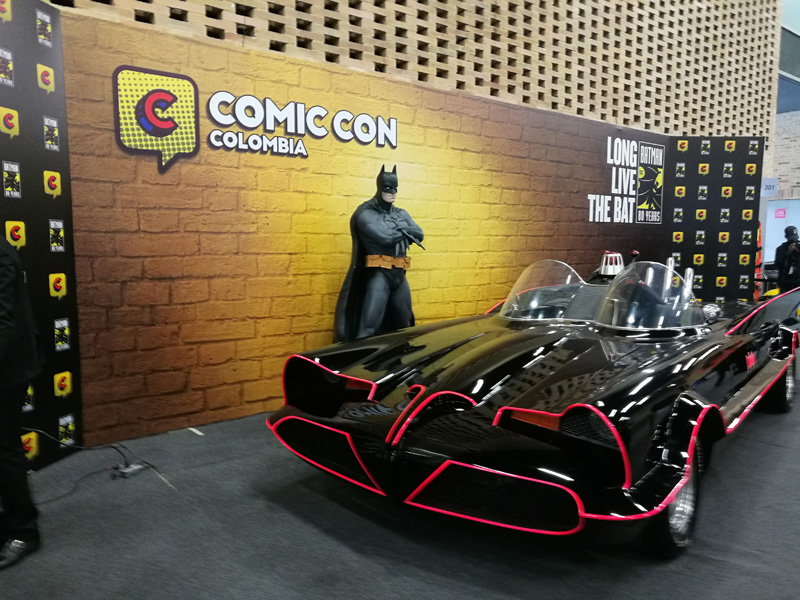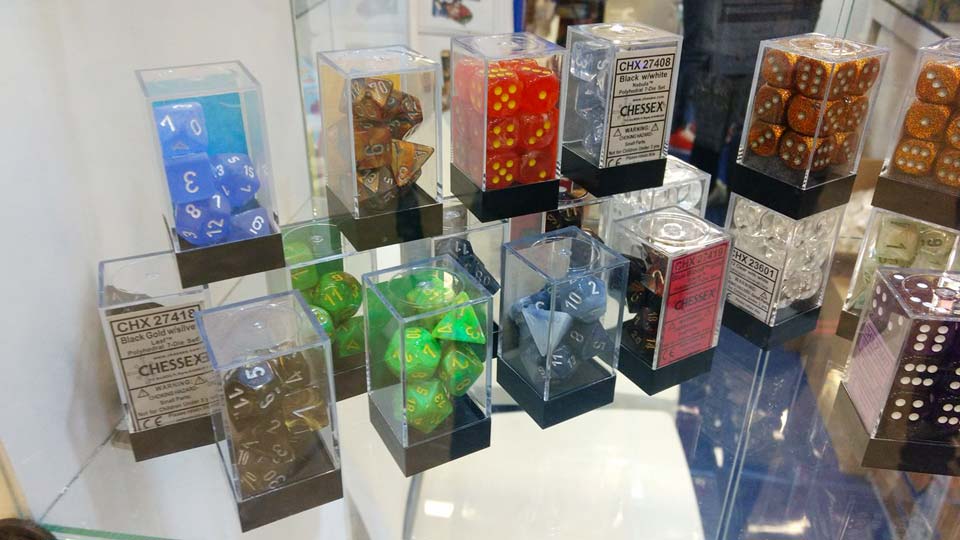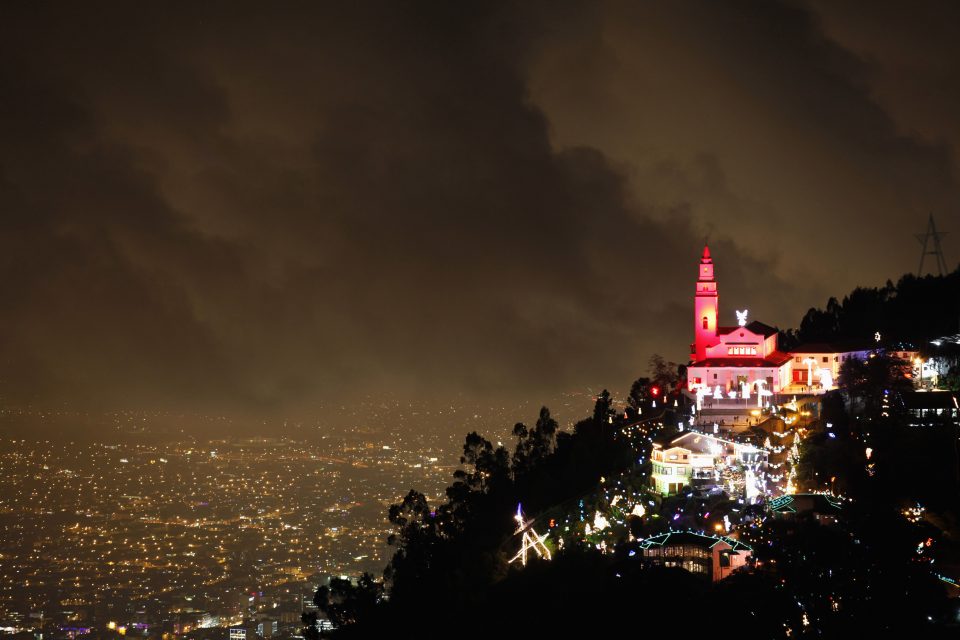
Our beautiful city has much to behold for the willing tourists. Photo: Eduardo Unda-Sanzana, Flickr CC by 2.0
We all know about the delights that Colombia has to offer should you want to go on a weekend break – there are so many well known places around Bogotá. And should you feel like travelling a little longer, with the Caribbean and Pacific coasts, cities, the Amazon, jungles, nature, deserts and open plains the country has a wealth of variety to offer.
But what about something a little closer to home? Bogotá is now a major stop off for many people coming to Colombia with a whole host of things to do and see. We take a look at three of the more popular activities currently happening in the city:
Bogotá Bike Tour
Bogotá Coffee Tour
Bogotá Graffiti Tour
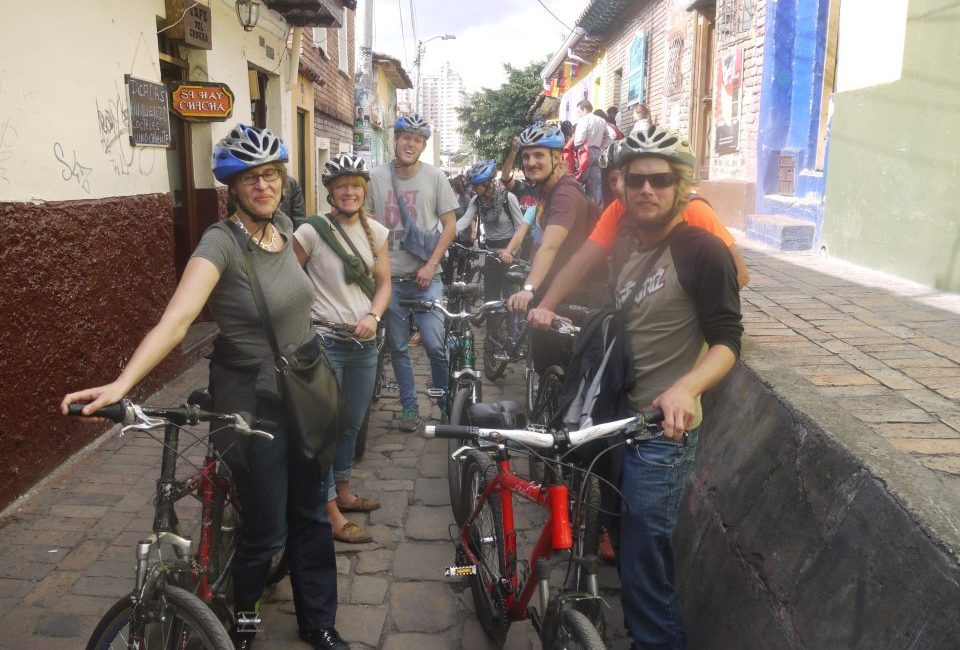
Bikers passing through the Chorro de Quevedo on the Bogotá Bike Tour.
A city on wheels
As The Bogotá Bike Tour whisks the group around the city on two wheels, Julian Kircher saddles up and is enveloped by an abundance of odours, noises and experiences
It’s a little after lunchtime and I’m waiting in a small bicycle workshop in the Candelaria for the tour to kick off. The room starts to fill up with an eclectic mix of people from all over the world who are in various states of sobriety, and I know it is going to be a good afternoon. Once we’re all settled in we finally jump on our bikes, the Scottish contingent rather unsteadily so, and set off. After only one minor crash we reach our first destination: Plaza de Los Periodistas Gabriel García Márquez, named after Colombia’s most famous writer.
Then it’s a short ride into the Las Nieves district, where our tour begins in earnest. Entering a small and bustling market we stop at a modest stall, bursting with fruits of all shapes and colours and wafting a deliciously fruity bouquet. It looks and smells like a vegan’s candy land. Here we try a whole spectrum of different products, ranging from the sour to the very sour and finally, for the brave and the stupid among us, the VERY spicy ají.
Fanning our mouths and wondering why exactly we had eaten bites of large red chilli, we walk through a cloud of heavy fish odour emitted by the many cevicherias and cross the street. There we enter an unassuming doorway that leads to a small and slightly shabby bar. The sound of explosions is the first thing to hit my senses, closely followed by the acrid smell of gunpowder and a growing feeling of excitement. I learn that I have stepped into a tejo den. A place that features beer and gunpowder is clearly a very special place indeed.
Tejo is the traditional Colombian sport of throwing two pound metal discs at bags of gunpowder fixed to a clay board. Accompanied best by copious amounts of beer, I have discovered my calling.
The proprietor gives us a demonstration and, seeing him hurl his disc over a distance of 15 metres with the accuracy of a trained sniper with a grudge, our group gains a totally unfounded confidence. When it is our turn, we start throwing with great gusto and little skill, amazed at the level of trust our guide and the owner have in us. Large metal chunks are flying through the air, explosions crash through our conversations and our group starts to bond in the midst of this beautiful chaos. Tejo mixes a brilliantly childish sense of fun with lax health and safety regulations, and the experience will go down as one of my personal Colombia highlights.
Wobbling out of the bar, slightly shell shocked, we resume our tour. We weave through the traffic of Bogotá rush hour, avoiding countless yellow taxis and impatient commuters, until we reach the Parque Nacional. This calm oasis amidst the traffic also contains a topographic map of the city, which our guide uses as the basis for a quick history lesson.
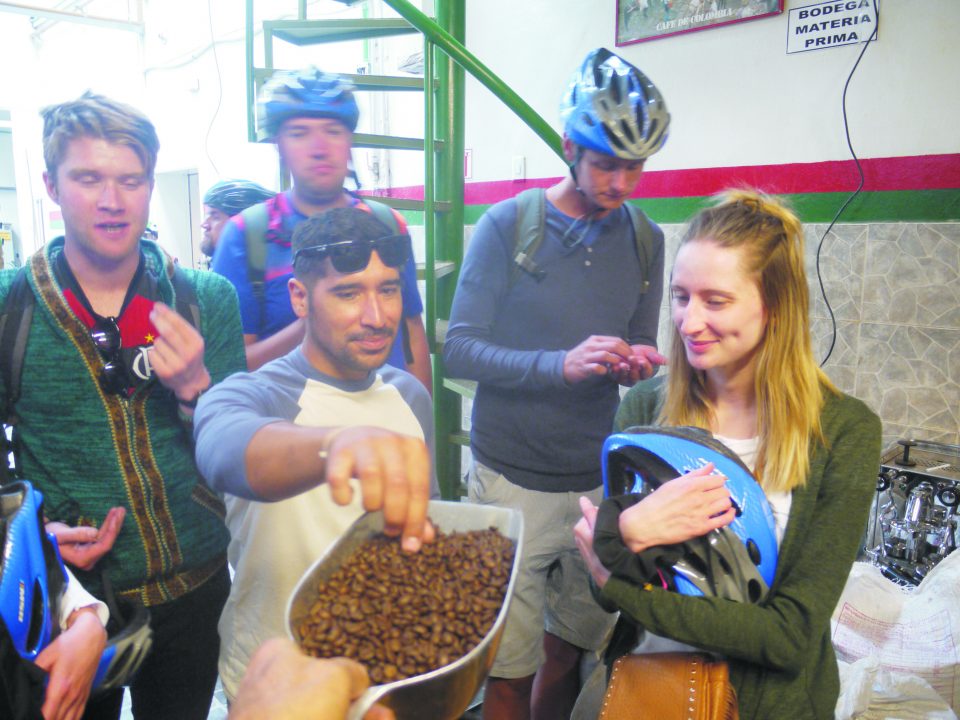
Coffee tasting on one of the many stops on the tour. Photos: Bogotá Bike Tour
The next stop is pure garbage. Or, more precisely, the garbage museum of Bogotá. Located on the outskirts of the popular neighbourhood of Parkway, this is a gem, albeit a fairly dirty one. Set up by an activist who wants to highlight the amounts of rubbish being dumped and left to foul the streets, this house is now a hive of narrow alleys leading through mountains of broken typewriters, old floppy disks, discarded wrappings and other long forgotten bits and pieces. It is hardly surprising that an aroma of old rubbish hangs in the air.
Fortunately, this is quickly replaced by the rich smell of coffee that greets us before we even reach our next stop. Slow tendrils of the delicious odour entice us into the Café de la Fonda coffee factory, located near the Centro Memorial. The source of the tempting fragrance is a large drum; a lazily rotating coffee roaster that is emitting an invisible vapour and making us eager to sample the goods, which we get to do after a quick tour and receiving some information on Colombian coffee, as well as learning how to recognise the best beans.
Pro tip: while connoisseurs might sniff at the adulteration of their black gold, I’d highly recommend trying your coffee with ice cream, Baileys and caramel sauce. It is a dessert that will wake you up, tastes delicious and intoxicates all in one!
With caffeine now coursing through our systems, we’re feeling satisfied and slightly more sober as we head back towards La Candelaria. On the way we stop to admire some particularly important works of graffiti. Our guide emphasizes the importance of street art in Bogotá and explains that it is a form of expression that highlights important social issues in the country.
For COP$35,000 plus a bit more for optional purchases during the tour, I discovered some truly special Colombian experiences. Our bilingual guide, Nico, was friendly, interesting and knowledgeable about the past, present and some of the quirks of this multifaceted metropolis.
You’ll find Bogotá Bike Tours on Carrera 3 No. 12-72, La Candelaria. Tours leave every day at 10:30 a.m. and 1:30 p.m. For more information visit their website on www.bogotabiketours.com.
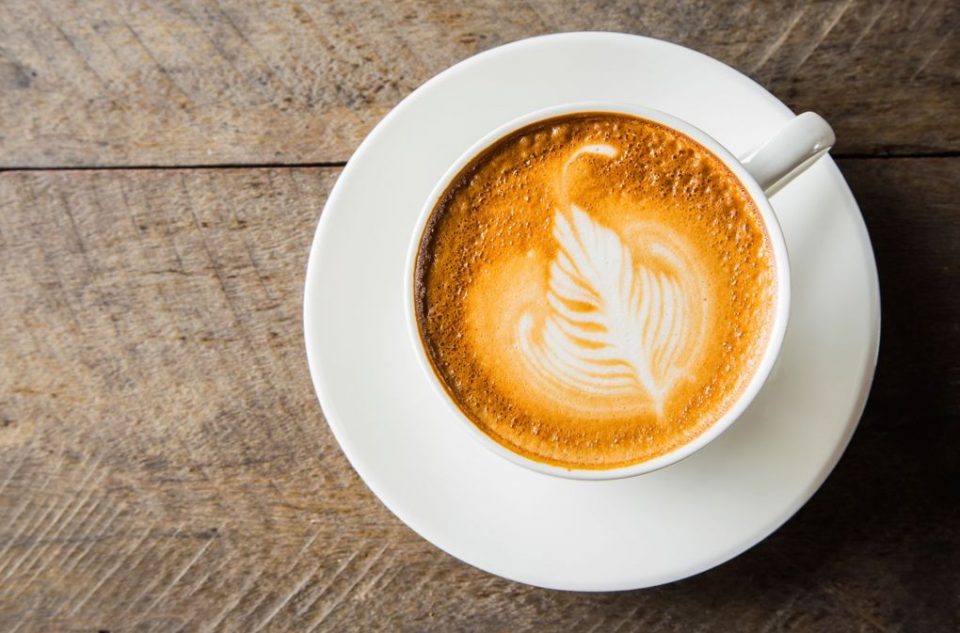
Flavours of Bogotá coffee tour show you that coffee is more then instant!
Wake up and smell the coffee
Speciality coffee is booming, but how much do you know about the varieties of bean and the types of preparation? Emma Newbery goes on the Coffee Shop Tour to find out more.
Would you believe that the average Colombian only drinks 1.8kg of coffee per person per year? Compare that with the average European who gets through about 4kg every year, and Finns (the most voracious coffee drinkers on earth) who clock in a whopping 9.6kg.
It’s particularly striking since the coffee industry employs about 10% of the population, whether in production, processing or selling. Over 500,000 families depend on the little beans for their livelihoods, and Colombia is the fourth largest coffee producer in the world.
These are just a few of the interesting snippets you will learn about the bean that Colombia is famous for when you embark on the Coffee Shop Tour.
Started by Karen Attman, the lady behind flavoursofbogota.com and a long time coffee afficionado, the tour manages to cram a country’s worth of flavour into a relaxed meander through three very different Zona G cafés.
We start in Café Cultor, located in a funky shipping container just outside the Impact Hub’s co-working/innovation space. They work directly with farmers, especially in conflict areas, and help them to develop speciality coffees which will bring in more money. The baristas are not only coffee geeks, with a passion for coffee that is more intense than a shot of espresso, they’ve also been to the farms and talked to the people there.
It’s worth looking out for their range of exoticas. From small, limited harvests, these beans have distinct and different flavours. We tried the Huila, which the barista on duty recommended would be best prepared in a chemex, pour-over style coffee maker.
People say tasting coffee is a bit like tasting wine, but it seems to me that there are even more variables here. First, there’s the type of bean. Then there’s the region and soil where it was grown. Then there’s the way it was harvested and husked. Then there’s the roasting. And that’s before you even get into the various ways you can actually make the coffee – all of which influence the taste.
- A selection of flavours available in Café Cultor.
- Juan Valdez barista demonstrates the syphon method of brewing coffee.
Our next stop was Amor Perfecto, one of the city’s leading coffee innovators with a café lab where they showcase and train top baristas. You will have seen their beans on sale throughout the city as their brand has deservedly grown dramatically in recent years.
The barista on duty weighs exactly the right amount of the Tolima coffee as she lovingly prepares our brew. This time in a more conventional filter.
One of the highlights of the tour was the way that Karen took us on a journey that went beyond the types of coffee and methods of brewing. She managed to introduce us to the people behind the coffee – both in person and by sharing their stories.
So it was in the Juan Valdez Orígenes café where we meet another Karen who also has a major java passion. This apparently unassuming barista in her mid twenties has taken on the industry’s surprisingly machismo culture and won.
She tells us how she discovered her calling almost by chance, with a post-university job to make ends meet. She was captivated by the types of coffee and the types of preparation and wanted to know more and do more. Only to be told, “Here, the baristas are men”.
Unassuming she may be, but undetermined she is not. She kept pushing and learning until finally her boss said, “We’ll see what we can do.” Last year Karen was the first ever female champion of the Juan Valdez championships, and the only woman to reach the semi-finals of Colombia’s national barista championships.
“I’m really happy because it has empowered more women,” she tells us, smiling. “They have seen the results.”
Given the existence of so many quality small, independent coffee shops, a big chain like Juan Valdez was actually a bit of a surprise stop. Karen has since told us that she has dropped the Orígenes venue in favour of nearby Libertario, which she says have “some of the most professional and knowledgeable baristas in the city”.
At the time Karen explained, “Juan Valdez put Colombian coffee on the map”.
The craggy old man with his donkey is the public face of the National Coffee Growers Federation. Almost all of the country’s growers are part of the federation, which works with farmers to help them develop best coffee practices and importantly guarantees that they receive a minimum price for their beans.
Here, we experience the most exciting brewing method – the syphon – with its bubbling test tube that’s more like a science experiment than a beverage infusion. We try the Sierra Nevada coffee that is grown with very few pesticides by an indigenous community and has chocolatey hints that make it my favourite of the day.
It’s a great way to end what has been a fascinating java jaunt. I think I actually learned more in a morning with Karen than three days in Salento.
At the moment Karen runs tours in the Zone G on Thursday and Friday. She has also opened tours in Usaquén and La Candelaria. Private tours are also available according to availability.
The Coffee Shop Tour costs USD$35 per person. You will need to book in advance by contacting Flavours of Bogota on www.flavorsofbogota.com or email them at [email protected].
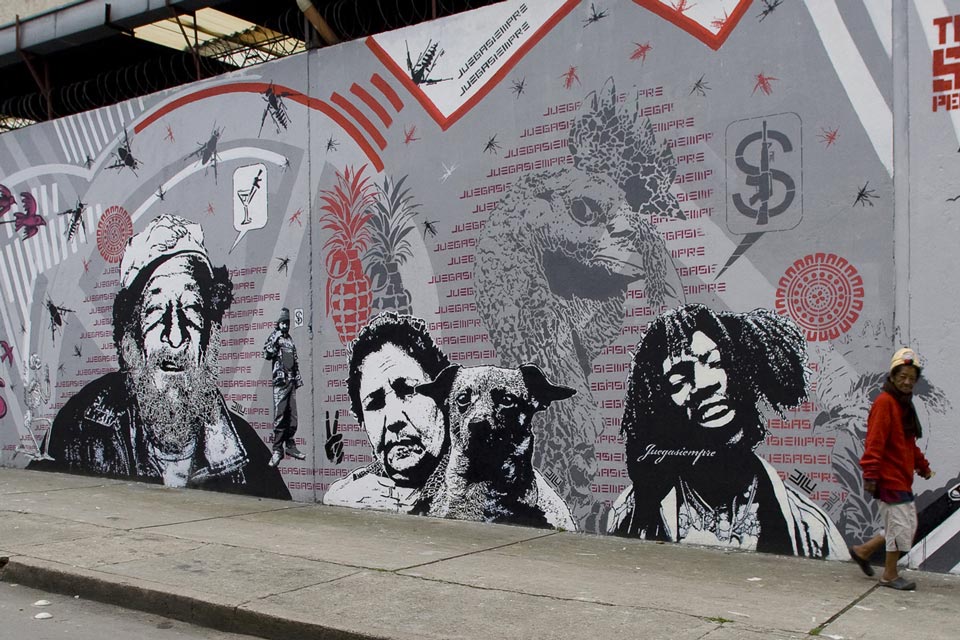
‘We discuss a large wall done by Bogota Street Art collective, which includes stencil artists Lesivo, Toxicomano, Djlu and freestyle painter Guache. Each artist depicts specific socio-political aspects affecting Colombia in this mural.’ – CRISP. Photo: Bogotá Street Art Colective
If walls could talk
With a renowned urban art scene, Bogotá has plenty of great graffiti to discover, as Ángela Forero-Aponte found out when she took a graffiti tour
I’ve been living in this city for around 20 years and I’m just starting to discover it. There’s so much to see, so many places to explore and some things which, as a Colombian, I had never even considered. The downtown graffiti tour opened my eyes to some of the wonders my city has to offer, as well as my own misconceptions about this misunderstood art form.
Of course, this is not the first of its kind; from London to New York to Berlin, the urban art scene has long been lauded and analysed. But the fact that Bogotá has its own graffiti tour intrigued me and I was soon to discover the booming scene that now has our capital ranked as one of the top destinations for urban art enthusiasts.
To be honest, I had always seen graffiti as an ugly component of a city, as, in my ignorance, I related it to crime, dirt and lack of security. How wrong I was.
Our knowledgeable guide walked us through a sort of gallery of art and resistance. You see, this is not a bunch of artists leaving their mark on the world for the sake of being noticed, they are a collective of citizens who dare to condemn poverty, social injustice, stereotyping, indifference, corruption and the pertinent issues affecting society.
Their artwork tells the current story of the city, its social reality, people’s struggles, and Bogotá’s troubles. They should not be ignored, for they provide a voice to those who so often go unheard.
We learnt about the various types of graffiti artists and the different forms and classifications of the genre – from “heaven”, those pieces that are painted in hard-to-reach places and which garner the artist respect from the graffiti community, to blockbusters and tags, throw-ups, stickers (slaps) and stencils.
For foreigners and Colombians alike, this is an intriguing way to get closer to our city and really understand the society we are a part of and while falling love with Bogotá a little bit more.
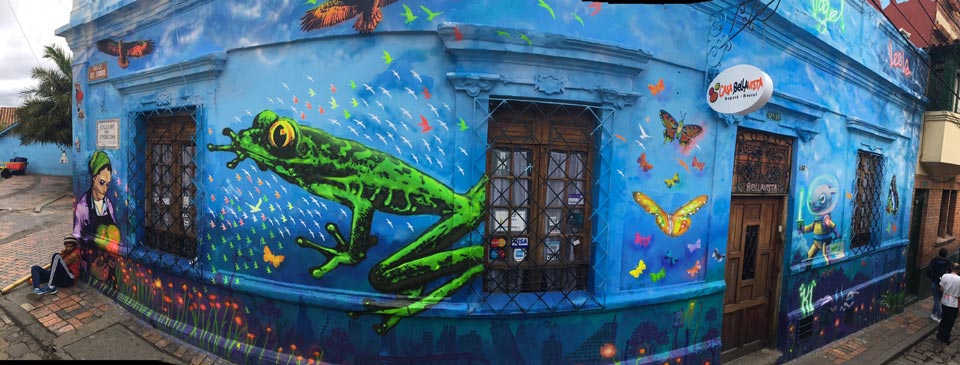
One of the many amazing murals visited on the graffiti tour. Photo: Bogotá Graffiti Tour
Behind the tour – We find out more from tour founder, CRISP
The graffiti tour was founded five years ago by Christian Petersen, aka CRISP. He tells The Bogotá Post that “on this tour, we strive to show and share with you the works and artists that have made this city a thriving hot spot of street art for not only in Colombia but around the world”.
Born in Australia, CRISP is an artist himself and in the seven years he’s been here, he has been able to both paint and speak with artists and amass a wealth of understanding about this vibrant subculture.
He explains that the origins of graffiti in Colombia go back as far as the petroglyphs written by the indigenous Chibcha people on the walls of caves in Bogotá savannah, but that in more recent history, it has become an important form of cultural expression and social commentary.
CRISP explains that all of the tour guides are connected to the graffiti scene which means they can give “detailed insight into the specific techniques and styles used, meanings behind the works, legality of graffiti, historical and sociopolitical context and personal stories about the artists creating the works”.
Tours leave at 10am and 2pm every day from the Plaza de los Periodistas. Book online at bogotagraffiti.com. The guide will ask for a voluntary contribution at the end of the tour, some of which will goes towards social projects in the city.

